It is common for exotic fruits to have a higher value than the others because they are not produced on a high scale.
Exotic fruits have a striking shape, color, aroma and flavor. In addition, they also have several health benefits, with nutrients and vitamins that contribute to the functioning of the body.
1. Cherimoia (Annona cherimola Mill)

Originally from the highlands, Cherimoia is produced in countries of South America with more than 1,500 meters of altitude, as Colombia, Peru and Bolivia. In Brazil, it is little cultivated, being more common in Serra da Mantiqueira, in São Paulo.
It has creamy, sweetened pulp and black seeds. Its shell is green and the surface formed by level carpels.
It is a fruit rich in vitamin A, aiding in the health of the skin and the eyes. It also has vitamin C, being important for the functioning of the immune system, besides having antioxidant action and helping in the production of collagen.
2. Wildflower (Passiflora ligularis)
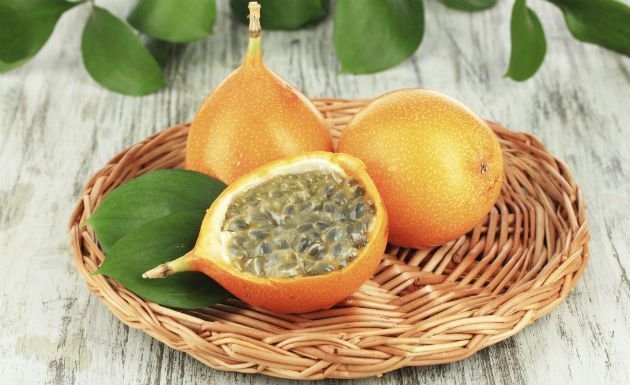
Its origin is the mountains of Mexico and Central America and its planting is common in Colombia, which presents climate and soil that contribute to its development.
Prickly pear has a hard, smooth bark and its pulp is very similar to passion fruit, with gelatinous consistency and black seeds. With its own aroma and flavor, this fruit is very used in the preparation of juices, ice cream and drinks.
It is a fruit with a low caloric value, rich in photochemicals that aid in the control of cholesterol and soluble fibers, which help in the prevention of diabetes.
3. Lychee (Litchi chinensis Sonn)
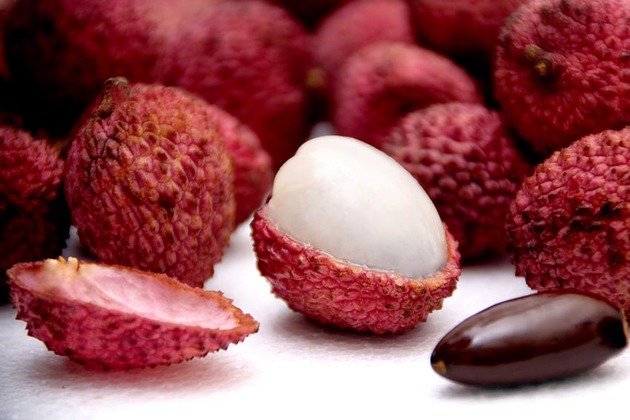
Originally from southern China, lychee is most easily found in Brazil, being produced in São Paulo, Minas Gerais, Bahia and Paraná.
They are small fruits, with reddish rind and roughness. Its pulp is white and juicy, with a sweet and slightly acidic flavor.
Lychee is rich in vitamin C, with larger amounts than orange and lemon. It also has many fibers. Its nutrients aid in heart health and blood regulation, and have anti-inflammatory effects.
4. Longan (Dimocarpus longan)
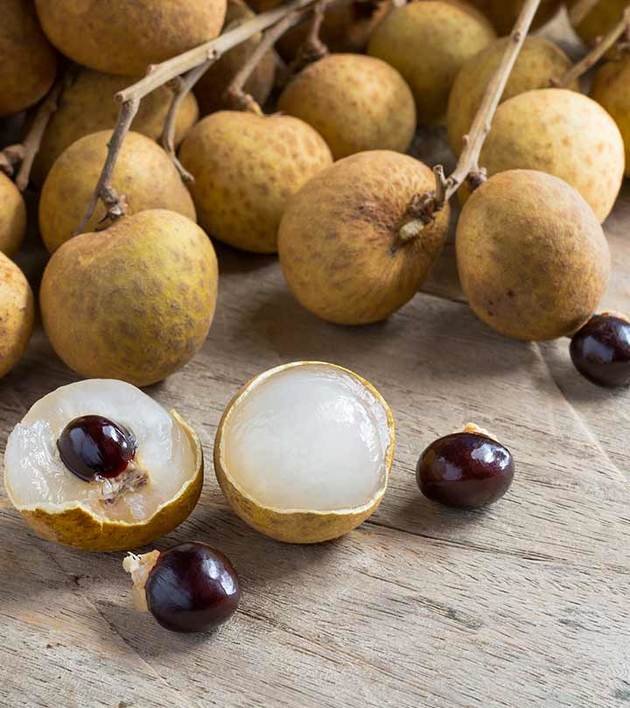
Originally cultivated in China, longan is also known as dragon's eye.
With a single black seed, this fruit has a sweet and sweet flavor that approaches the melon.
It is known for its herbal properties, in addition to being rich in vitamin C and iron, which together help in the fight against anemia. It is also considered a source of potassium, phosphorus, magnesium and calcium.
5. Mangosteen (Garcinia mangostana)

Mangosteen originates in tropical Southeast Asia. It is known to the natives of the region as the tastiest fruit in the world. In Brazil, it is produced in the coastal region of Bahia and in the west of the state of São Paulo.
It has white pulp of sweet and spicy taste. Used as juice, it can also be consumed in capsules or tea, releasing an active principle that inhibits the desire to consume sweets.
Rich in vitamins and minerals, it has anti-inflammatory, antiviral, antifungal and antibiotic action. In addition, it has low energy value.
6. Physalis (Physalis angulata)
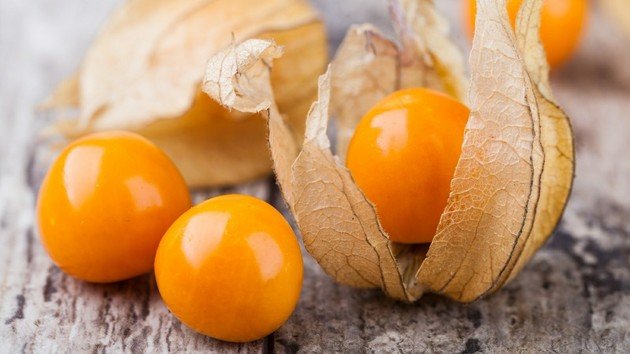
The origin of this fruit are regions with temperate, warm and subtropical climate. The main country to grow physalis is Colombia.
Its flavor is refreshing and has a slight acidity, being similar to tomato. It is a small fruit, with thin peel and of orange color, being each fruit surrounded by leaves.
Its nutrients help strengthen the immune system, purify blood and lower cholesterol levels.
7. Pitaya (Hylocereus undatus)
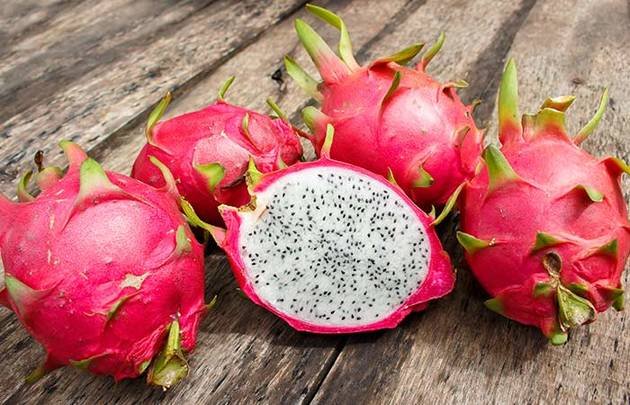
Originally from South America, pitaya has become popular in the Brazilian market.
It has a gelatinous pulp, with a sweet and sweet flavor. Its bark is reddish, but its interior may be white or pink.
The pitaya is rich in vitamin A and C. Helps protect the gastric mucosa and improve inflammation. It also has laxative power.
8. Rambutão (Nephelium lappaceum)
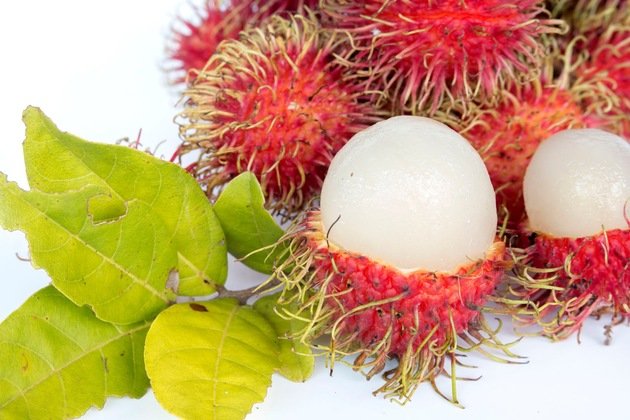
The rambutan is a fruit originating in Southeast Asia, especially in Thailand.
Its name comes from the Indonesian "rambut", which means hair. It has a hard shell of red color and resembles a hedgehog. Its flesh is yellowish, fleshy, juicy, with a sweet and mild acid taste.
Its most outstanding properties are the presence of carbohydrates and proteins, which serve as stimulants and assist in the prevention of bumps. It has vitamin C that contributes in the absorption of minerals, iron and copper.
9. Pomegranate (Punica granatum)
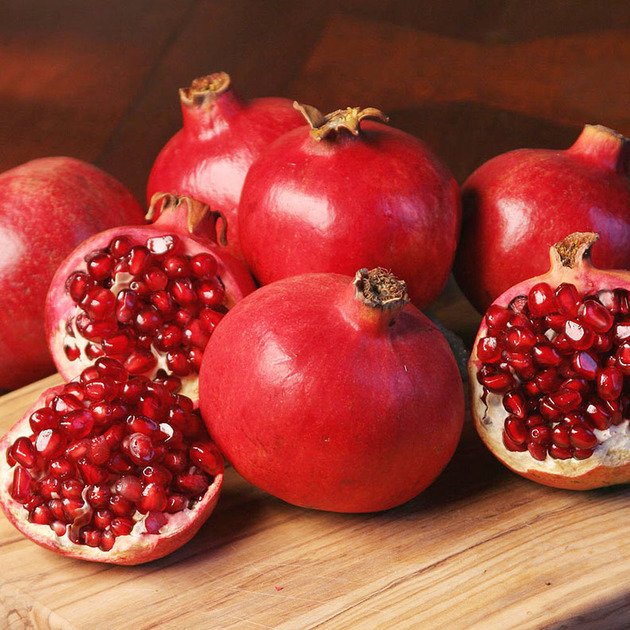
Of Mediterranean origin, the pomegranate is a very popular fruit in the eastern and middle eastern Mediterranean, being able to be cultivated in tropical and subtropical climates.
The pomegranate has a smooth, reddish and very bright peel. Its pulp is formed by several seeds that are surrounded by a fleshy translucent layer. It has a slightly sour taste and is used in the preparation of sweets and salted.
This fruit has different customs and beliefs, it can symbolize fecundity, hope and wealth. For our health, pomegranate is a rich source of antioxidants, aiding in the prevention of cardiovascular problems, in addition to possessing vitamin A, C and folic acid.
10. Tamarillo (Solanum betaceum)
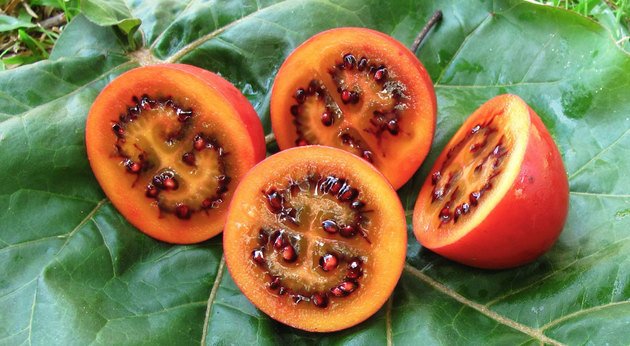
Originally from New Zealand, tamarillo is also known as tree tomatoes, passion fruit tomatoes and French tomatoes. Its appearance is very similar to that of a tomato, but its seeds are dark.
Its rind is bitter and its pulp has bittersweet flavor. It is consumed in the preparation of juices, jellies, jams and even sauces to accompany meats.
It is rich in vitamin A, which assists in controlling cholesterol. It also has vitamin B6, vitamin E, vitamin C and antioxidants.
Nenhum comentário:
Postar um comentário